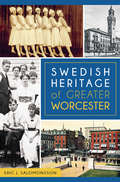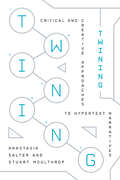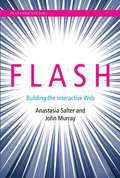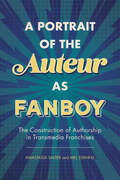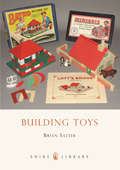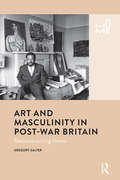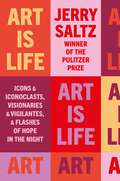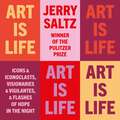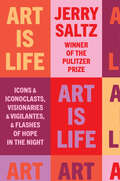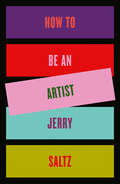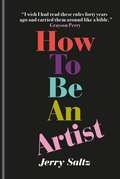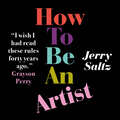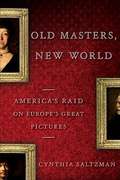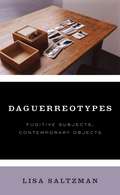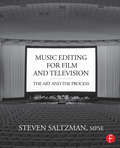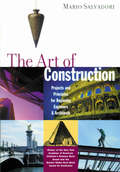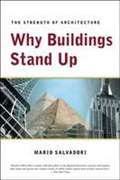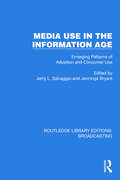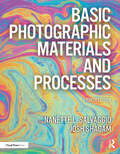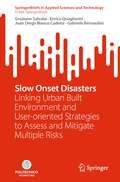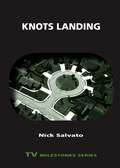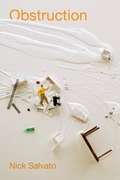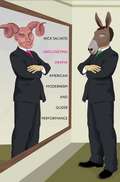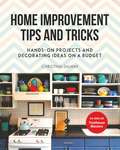- Table View
- List View
Swedish Heritage of Greater Worcester (American Heritage)
by Eric J. SalomonssonBy 1900, Worcester was home to the largest Swedish population in the eastern United States. These new residents brought an innovative and unique spirit to the community. Industrialist John Jeppson invented an artificial emery stone, and his experiments in the abrasives field became the foundation of the Norton Company. Worcester welcomed Swedish immigrants who preserved traditions through various lodges, church congregations and Swedish-owned businesses like Holstrom's Market, Lundborg's and Crown Bakery. Fairlawn Hospital and the Lutheran Home were other mainstays that marked the Swedes' local presence. Author Eric J. Salomonsson explores how Worcester's Swedish immigrants became Swedish-Americans while making vital and vibrant contributions to their adopted city.
Twining: Critical and Creative Approaches to Hypertext Narratives
by Anastasia Salter Stuart MoulthropHypertext is now commonplace: links and linking structure nearly all of our experiences online. Yet the literary, as opposed to commercial, potential of hypertext has receded. One of the few tools still focused on hypertext as a means for digital storytelling is Twine, a platform for building choice-driven stories without relying heavily on code. In Twining, Anastasia Salter and Stuart Moulthrop lead readers on a journey at once technical, critical, contextual, and personal. The book’s chapters alternate careful, stepwise discussion of adaptable Twine projects, offer commentary on exemplary Twine works, and discuss Twine’s technological and cultural background. Beyond telling the story of Twine and how to make Twine stories, Twining reflects on the ongoing process of making. "While there have certainly been attempts to study Twine historically and theoretically... no single publication has provided such a detailed account of it. And no publication has even attempted to situate Twine amongst its many different conversations and traditions, something this book does masterfully." —James Brown, Rutgers University, Camden
Flash
by Anastasia Salter John MurrayAdobe Flash began as a simple animation tool and grew into a multimedia platform that offered a generation of creators and innovators an astonishing range of opportunities to develop and distribute new kinds of digital content. For the better part of a decade, Flash was the de facto standard for dynamic online media, empowering amateur and professional developers to shape the future of the interactive Web. In this book, Anastasia Salter and John Murray trace the evolution of Flash into one of the engines of participatory culture. Salter and Murray investigate Flash as both a fundamental force that shaped perceptions of the web and a key technology that enabled innovative interactive experiences and new forms of gaming. They examine a series of works that exemplify Flash's role in shaping the experience and expectations of web multimedia. Topics include Flash as a platform for developing animation (and the "Flashimation" aesthetic); its capacities for scripting and interactive design; games and genres enabled by the reconstruction of the browser as a games portal; forms and genres of media art that use Flash; and Flash's stance on openness and standards--including its platform-defining battle over the ability to participate in Apple's own proprietary platforms. Flash's exit from the mobile environment in 2011 led some to declare that Flash was dead. But, as Salter and Murray show, not only does Flash live, but its role as a definitive cross-platform tool continues to influence web experience.
A Portrait of the Auteur as Fanboy: The Construction of Authorship in Transmedia Franchises
by Anastasia Salter Mel StanfillIncreasingly over the past decade, fan credentials on the part of writers, directors, and producers have come to be seen as a guarantee of quality media making—the “fanboy auteur.” Figures like Joss Whedon are both one of “us” and one of “them.” This is a strategy of marketing and branding—it is a claim from the auteur himself or industry PR machines that the presence of an auteur who is also a fan means the product is worth consuming. Such claims that fan credentials guarantee quality are often contested, with fans and critics alike rejecting various auteur figures as the true leader of their respective franchises. That split, between assertions of fan and auteur status and acceptance (or not) of that status, is key to unravelling the fan auteur.In A Portrait of the Auteur as Fanboy: The Construction of Authorship in Transmedia Franchises, authors Anastasia Salter and Mel Stanfill examine this phenomenon through a series of case studies featuring fanboys. The volume discusses both popular fanboys, such as J. J. Abrams, Kevin Smith, and Joss Whedon, as well as fangirls like J. K. Rowling, E L James, and Patty Jenkins, and dissects how the fanboy-fangirl auteur dichotomy is constructed and defended by popular media and fans in online spaces, and how this discourse has played in maintaining the exclusionary status quo of geek culture. This book is particularly timely given current discourse, including such incidents as the controversy surrounding Joss Whedon’s so-called feminism, the publication of Harry Potter and the Cursed Child, and contestation over authorial voices in the DC cinematic universe, as well as broader conversations about toxic masculinity and sexual harassment in Hollywood.
Building Toys
by Brian SalterBuilding blocks have been a familiar presence in children's toy collections for generations, but in the twentieth century new production techniques allowed the building brick to evolve into a multiplicity of systems that could make any child his or her own architect and skilled builder, capable of constructing realistic and sturdy miniature buildings. This highly illustrated book is devoted to British building toys with all the major brands and some of the minor ones represented. Photographs of sets, completed buildings and the box art and advertising material that were used to sell these toys make this book a feast of nostalgia for anyone who grew up in the middle years of the last century, and an invaluable source of information for any collectors who keep the memory of these toys alive today.From the Trade Paperback edition.
Art and Masculinity in Post-War Britain: Reconstructing Home (Home Ser.)
by Gregory SalterIn this book, Gregory Salter traces how artists represented home and masculinities in the period of social and personal reconstruction after the Second World War in Britain. Salter considers home as an unstable entity at this historical moment, imbued with the optimism and hopes of post-war recovery while continuing to resonate with the memories and traumas of wartime. Artists examined in the book include John Bratby, Francis Bacon, Keith Vaughan, Francis Newton Souza and Victor Pasmore. Case studies featured range from the nuclear family and the body, to the nation. Combined, they present an argument that art enables an understanding of post-war reconstruction as a temporally unstable, long-term phenomenon which placed conceptions of home and masculinity at the heart of its aims. Art and Masculinity in Post-War Britain sheds new light on how the fluid concepts of society, nation, masculinity and home interacted and influenced each other at this critical period in history and will be of interest to anyone studying art history, anthropology, sociology, history and cultural and heritage studies.
Art is Life: Icons & Iconoclasts, Visionaries & Vigilantes, & Flashes of Hope in the Night
by Jerry Saltz"The world's most famous and celebrated contemporary art critic." -GQ"One of the most powerful art critics today." -Time Out"Senior art critic and columnist for New York magazine, Jerry Saltz is as influential as they come. He demystifies the art world in refreshing plain speak and his latest book, focusing on the two decades since 9/11, promises to be another must-listen." - Irish Times From the Pulitzer Prize winner and bestselling author of How to Be an Artist, a deliciously readable survey of the art world in turbulent times. Jerry Saltz is one of our most-watched writers about art and artists, and a passionate champion of the importance of art in our shared cultural life. Since the 1990s he has been an indispensable cultural voice: witty and provocative, he has attracted contemporary readers to fine art as few critics have.Now, in Art Is Life, Jerry Saltz draws on two decades of work to offer a real-time survey of contemporary art as a barometer of our times. Chronicling a period punctuated by dramatic turning points - from the cultural reset of 9/11 to the rolling social crises of today - Saltz traces how visionary artists have both documented and challenged the culture.Art Is Life offers Saltz's eye-opening appraisals of trailblazers like Kara Walker, Hilma af Klint and Jasper Johns; provocateurs like Jeff Koons, Richard Prince and Marina Abramovic; and visionaries like Jackson Pollock and Willem de Kooning. With his signature blend of candour and conviction, Jerry Saltz argues in Art Is Life for the importance of the fearless artist. The result is an openhearted and irresistibly readable appraisal by one of our most important cultural observers.Praise for How to Be an Artist:"I wish I had read these rules forty years ago and carried them around like a bible. They are the generous, loving, enthusiastic, bullshit-free advice of a master communicator, just reading them makes me want to charge back into the studio" - Grayson Perry"Being an artist is a lonely pursuit - twenty-four hours a day, seven days a week, for the rest of your life. Most of the time it hurts. This book will help the pain" - Tracey Emin"Joy is palpable in these pages. We need such thinking right now" - Apollo Magazine
Art is Life: Icons & Iconoclasts, Visionaries & Vigilantes, & Flashes of Hope in the Night
by Jerry SaltzFrom the Pulitzer Prize winner and bestselling author of How to Be an Artist, a deliciously readable survey of the art world in turbulent times.Jerry Saltz is one of our most-watched writers about art and artists, and a passionate champion of the importance of art in our shared cultural life. Since the 1990s he has been an indispensable cultural voice: witty and provocative, he has attracted contemporary readers to fine art as few critics have. An early champion of forgotten and overlooked women artists, he has also celebrated the pioneering work of African American, LGBTQ+, and other long-marginalized creators. Sotheby's Institute of Art has called him, simply, 'the art critic.'Now, in Art Is Life, Jerry Saltz draws on two decades of work to offer a real-time survey of contemporary art as a barometer of our times. Chronicling a period punctuated by dramatic turning points - from the cultural reset of 9/11 to the rolling social crises of today - Saltz traces how visionary artists have both documented and challenged the culture.Art Is Life offers Saltz's eye-opening appraisals of trailblazers like Kara Walker, Hilma af Klint and Jasper Johns; provocateurs like Jeff Koons, Richard Prince and Marina Abramovic; and visionaries like Jackson Pollock and Willem de Kooning. Saltz celebrates landmarks like the Obama portraits by Kehinde Wiley and Amy Sherald, writes searchingly about disturbing moments such as the Ankara gallery assassination, and offers surprising takes on figures from Thomas Kinkade to Kim Kardashian. And he shares stories of his own haunted childhood, his time as a 'failed artist,' and his epiphanies upon beholding work by Botticelli, Delacroix, and the cave painters of Niaux.With his signature blend of candour and conviction, Jerry Saltz argues in Art Is Life for the importance of the fearless artist, reminding us that art is a kind of channeled voice of human experience, a necessary window onto our times. The result is an openhearted and irresistibly readable appraisal by one of our most important cultural observers.(p) 2022 Octopus Publishing Group
Art Is Life: Icons and Iconoclasts, Visionaries and Vigilantes, and Flashes of Hope in the Night
by Jerry SaltzFrom the Pulitzer Prize winner and bestselling author of How to Be an Artist: a deliciously readable survey of the art world in turbulent timesJerry Saltz is one of our most-watched writers about art and artists, and a passionate champion of the importance of art in our shared cultural life. Since the 1990s he has been an indispensable cultural voice: witty and provocative, he has attracted contemporary readers to fine art as few critics have. An early champion of forgotten and overlooked women artists, he has also celebrated the pioneering work of African American, LGBTQ+, and other long-marginalized creators. Sotheby's Institute of Art has called him, simply, &“the art critic.&” Now, in Art Is Life, Jerry Saltz draws on two decades of work to offer a real-time survey of contemporary art as a barometer of our times. Chronicling a period punctuated by dramatic turning points—from the cultural reset of 9/11 to the rolling social crises of today—Saltz traces how visionary artists have both documented and challenged the culture. Art Is Life offers Saltz&’s eye-opening appraisals of trailblazers like Kara Walker, David Wojnarowicz, Hilma af Klint, and Jasper Johns; provocateurs like Jeff Koons, Richard Prince, and Marina Abramović; and visionaries like Jackson Pollock, Bill Traylor, and Willem de Kooning. Saltz celebrates landmarks like the Obama portraits by Kehinde Wiley and Amy Sherald, writes searchingly about disturbing moments such as the Ankara gallery assassination, and offers surprising takes on figures from Thomas Kinkade to Kim Kardashian. And he shares stories of his own haunted childhood, his time as a &“failed artist,&” and his epiphanies upon beholding work by Botticelli, Delacroix, and the cave painters of Niaux. With his signature blend of candor and conviction, Jerry Saltz argues in Art Is Life for the importance of the fearless artist—reminding us that art is a kind of channeled voice of human experience, a necessary window onto our times. The result is an openhearted and irresistibly readable appraisal by one of our most important cultural observers.
How to Be an Artist
by Jerry SaltzArt has the power to change our lives. For many, becoming an artist is a lifelong dream. But how to make it happen? In How to Be an Artist, Jerry Saltz, one of the art world’s most celebrated and passionate voices, offers an indispensable handbook for creative people of all kinds. From the first sparks of inspiration—and how to pursue them without giving in to self-doubt—Saltz offers invaluable insight into what really matters to emerging artists: originality, persistence, a balance between knowledge and intuition, and that most precious of qualities, self-belief. <P><P>Brimming with rules, prompts, and practical tips, How to Be an Artist gives artists new ways to break through creative blocks, get the most from materials, navigate career challenges, and above all find joy in the work. Teeming with full-color artwork from visionaries ancient and modern, this beautiful and useful book will help artists of all kinds—painters, photographers, writers, performers—realize their dreams. <P><P><b>A New York Times Bestseller</b>
How to Be an Artist: The New York Times bestseller
by Jerry SaltzThe New York Times Bestseller "I wish I had read these rules forty years ago and carried them around like a bible. By chance or design I've followed most of them at some point but it took me a lifetime as an artist to find what worked. They are the generous, loving, enthusiastic, bullshit-free advice of a master communicator, just reading them makes me want to charge back into the studio" - Grayson Perry"Being an artist is a lonely pursuit - twenty-four hours a day, seven days a week, for the rest of your life. Most of the time it hurts. This book will help the pain" - Tracey EminOne of Elizabeth Gilbert's 2020 Quarantine Book Recommendations"Joy is palpable in these pages. We need such thinking right now" - Apollo MagazineAs the witty and passionate chief art critic for New York magazine, Jerry Saltz is often approached by artists, both amateur and professional, asking him for advice: How do I get started? How do I get better? Is what I'm doing even art at all? They want to know, in short, how to be an artist. Now, expanding on his viral cover story for New York magazine - and drawing on his decades of immersion in the art world - Saltz has the answers. How to Be An Artist is an indispensable book of practical inspiration for creative people of all kinds. Brimming with dozens of brand new rules, prompts, exercises, and tips designed to break through creative blocks, ignite motivation, and conquer bad habits, this book is designed to help artists of all kinds - painters, photographers, writers, performers - realize their dreams. Includes such advice as:- Make art for now, not the future- No, you don't need graduate school- Recognize convention, and resist constraint- Get lost- Listen to the wildest voices in your head- Know what you hate (it's probably you)- Finish the damn thing!- How to recover from critical injuries
How to Be an Artist: The New York Times bestseller
by Jerry Saltz"I wish I had read these rules forty years ago and carried them around like a bible. By chance or design I've followed most of them at some point but it took me a lifetime as an artist to find what worked. They are the generous, loving, enthusiastic, bullshit-free advice of a master communicator, just reading them makes me want to charge back into the studio" - Grayson Perry"Being an artist is a lonely pursuit - twenty-four hours a day, seven days a week, for the rest of your life. Most of the time it hurts. This book will help the pain" - Tracey EminPulitzer Prize-winning art critic Jerry Saltz is here to explain to you how to bring art and creativity into your life, with irreverent, inspiring and priceless pieces of advice on getting on in art. As the witty and passionate chief art critic for New York magazine, Jerry Saltz is often approached by artists, both amateur and professional, asking him for advice: How do I get started? How do I get better? Is what I'm doing even art at all? They want to know, in short, how to be an artist. Now, expanding on his viral cover story for New York magazine - and drawing on his decades of immersion in the art world - Saltz has the answers. How to Be An Artist is an indispensable book of practical inspiration for creative people of all kinds. Brimming with dozens of brand new rules, prompts, exercises, and tips designed to break through creative blocks, ignite motivation, and conquer bad habits, this book is designed to help artists of all kinds - painters, photographers, writers, performers - realize their dreams. Includes such advice as:- Make art for now, not the future- No, you don't need graduate school- Recognize convention, and resist constraint- Get lost- Listen to the wildest voices in your head- Know what you hate (it's probably you)- Finish the damn thing!- How to recover from critical injuries(p) 2020 Octopus Publishing Group
Old Masters, New World
by Cynthia SaltzmanThe Gilded Age race to bring Europe's most valuable art to AmericaIn 1870 a group of wealthy and culturally ambitious New Yorkers founded the Metropolitan Museum of Art in a Manhattan brownstone with a lackluster collection and not a single major work of art. Americans came late to the game of art collecting and raced to catch up. Soon, America's new industrial tycoons began to compete for Europe's extraordinary Old Master pictures, laying claim to works by Vermeer, Titian, Rembrandt, and others, and causing a major migration of art across the Atlantic. Cynthia Saltzman recounts the fierce competition to acquire some of the greatest paintings in the world and the boom in the market. At the centre of this enterprise were the steel tycoon Henry Clay Frick, the banker J. Pierpont Morgan, the sugar king Harry Havemeyer and his wife Louisine, as well as the Boston aesthete Isabella Stewart Gardner, and the Metropolitan's president, Henry Marquand. Old Masters, New World is the story of beauty, aesthetics, and taste; money, trade, and power. It is a backstage look at the part played in American collecting by experts like Bernard Berenson and dealers like Colnaghi, Knoedler, and Duveen - who raced around Europe to negotiate purchases and sales of the rarest and most costly masterpieces.
Old Masters, New World
by Cynthia SaltzmanA spellbinding account of the rapacious pursuit of the most exquisite paintings in the world In the Gilded Age, newly wealthy and culturally ambitious Americans began to compete for Europe's extraordinary Old Master pictures, causing a major migration of art across the Atlantic. Old Masters, New World is a backstage look at the cutthroat competition, financial maneuvering, intrigue, and double-dealing often involved in these purchases, not to mention the seductive power of the ravishing paintings that drove these collectors-including financier J. Pierpont Morgan, sugar king H. O. Havemeyer, Boston aesthete Isabella Stewart Gardner, and industrialist Henry Clay Frick. Packed with stunning reproductions, this is an ideal gift book for art lovers and history buffs alike.
Daguerreotypes: Fugitive Subjects, Contemporary Objects
by Lisa SaltzmanIn the digital age, photography confronts its future under the competing signs of ubiquity and obsolescence. While technology has allowed amateurs and experts alike to create high-quality photographs in the blink of an eye, new electronic formats have severed the original photochemical link between image and subject. At the same time, recent cinematic photography has stretched the concept of photography and raised questions about its truth value as a documentary medium. Despite this situation, photography remains a stubbornly substantive form of evidence: referenced by artists, filmmakers, and writers as a powerful emblem of truth, photography has found its home in other media at precisely the moment of its own material demise. By examining this idea of photography as articulated in literature, film, and the graphic novel, Daguerreotypes demonstrates how photography secures identity for figures with an otherwise unstable sense of self. Lisa Saltzman argues that in many modern works, the photograph asserts itself as a guarantor of identity, whether genuine or fabricated. From Roland Barthes's Camera Lucida to Ridley Scott's Blade Runner, W. G. Sebald's Austerlitz to Alison Bechdel's Fun Home--we find traces of photography's "fugitive subjects" throughout contemporary culture. Ultimately, Daguerreotypes reveals how the photograph, at once personal memento and material witness, has inspired a range of modern artistic and critical practices.
Music Editing for Film and Television: The Art and the Process
by Steven SaltzmanMaking music for the movies is a complicated, involved, and challenging process. Music Editing for Film and Television covers the practical skills needed to successfully hone your craft. Through an overview of the music editing process, this book will equip you with detailed techniques to solve musical problems encountered during editing. An abundance of interviews with well-known professionals provide a wide range of perspectives on music editing for film, while special features address an array of projects, from a low-budget documentary, to a Hollywood blockbuster, to indie projects.
The Art of Construction: Projects and Principles for Beginning Engineers & Architects (Ziggurat Book Ser.)
by Mario Salvadori"Introduces maturing minds to the principles that guide architects and engineers as they design and construct buildings and bridges." --School Shop
Why Buildings Stand Up: The Strength of Architecture
by Mario SalvadoriHere is a clear and enthusiastic introduction to building methods from ancient time to the present day, illustrated throughout with line drawings. In addition, Mr. Salvadori discusses recent advances in science and technology that have had important effects on the planning and construction of buildings.
Media Use in the Information Age: Emerging Patterns of Adoption and Consumer Use (Routledge Library Editions: Broadcasting #27)
by Jerry L. SalvaggioMedia Use in the Information Age (1989) analyses new technologies, their impact on mass communications, and their effects on the users of these new systems. It looks at technologies such as videotex, and their successes and failures around the world, and examines the early adoptions of technologies such as home computers.
Basic Photographic Materials and Processes
by Nanette L. Salvaggio Josh ShagamBasic Photographic Materials and Processes describes the three crucial stages of creating the perfect photograph—capture, processing and output—by providing a thorough technical investigation of modern, applied photographic technologies. This new edition has been fully revised and updated to explore digital image capture, processing and output. It covers a wide range of topics including: the scientific principles of measuring and recording light, the inner workings of digital cameras, image processing concepts, color management and photographic output to screen and print media. With these topics come in-depth discussions of extending dynamic range, image histograms, camera characterization, display capabilities, printer and paper technologies. It also includes applied exercises that provide the reader with a deeper understanding of the material through hands-on experiments and demonstrations, connecting theoretical concepts to real-world use. This comprehensive text provides photography students, educators and working professionals with the technical knowledge required to successfully create images and manage digital photographic assets. It is an essential resource for mastering the technical craft of photography.
Slow Onset Disasters: Linking Urban Built Environment and User-oriented Strategies to Assess and Mitigate Multiple Risks (SpringerBriefs in Applied Sciences and Technology)
by Graziano Salvalai Enrico Quagliarini Juan Diego Blanco Cadena Gabriele BernardiniThe book provides an overview of the Slow Onset Disasters (SLOD) in the urban built environment discussing potential strategies to assess and mitigate multiple climate change related risks. Climate change evidence has been reported in the last decades, suggesting that the anthropogenic activities are accelerating these changes towards a warmer and more polluted environment. In this context, SLODs have been linked to climate change related disasters and have been stated to have a higher impact risk within dense built environment (BE). Therefore, the book presents a description of the most relevant SLODs, their significance, and confluence, the way in which scientists and entities are monitoring their progression at different scales, a structured risk assessment strategy and the deconstruction of the BE characteristics that make it more prone to SLODs risk. In addition, it highlights the necessity of adapting the traditional risk assessment methods, to account for different vulnerability types, including the morphology and materiality of the BE, and the BE users’ characteristics. In fact, individual features influence users’ responses and tolerance to environmental stressors, because of age, health, gender, habits, and behaviour, thus impacting the users’ vulnerability. Exposure can then amplify these issues, since it defines the number of users that can be effectively affected by the SLOD. Starting from this perspective, the book first traces literature-based correlations between individual features, use behaviour, and individual response to the SLOD-altered open spaces. Then, a novel methodology, to quantify the variations of users’ vulnerability and exposure, is offered, to support designers in quickly defining input scenarios for risk assessment and mitigation. Lastly, it demonstrates, through a case study, the SLOD risk assessment framework proposed and the evaluation of the efficacy of risk mitigation strategies.
Knots Landing (TV Milestones Series)
by Nick SalvatoAiring on CBS for fourteen seasons (1979-93), Knots Landing was a spinoff of the popular drama Dallas, but ultimately ran longer and took a very different tone on domestic, social, and economic issues than its predecssor. In the first full-length scholarly study of Knots Landing, Nick Salvato situates the series in its economic and industrial contexts, addresses its surprisingly progressive relationship to the American politics of its period, offers close formal interpretations of noteworthy episodes, and unpacks the pleasures of the program's sensuous surfaces. While it has been largely overlooked in studies of 1980s television, Knots Landing nonetheless beat more masculine fare like Hill Street Blues and L.A. Law in the ratings, introduced a novel focus on middle-class lives in melodrama, and launched or revived the careers of its major stars. In this study Salvato investigates the series' place in widespread serialization of American primetime television in the early 1980s and the end of network dominance in the early 1990s, along with its unique relationship to Reaganism and glamour, on the one hand, and everydayness and suburbanization, on the other. Salvato also looks at the series in relation to key concepts such as memory, theatricality, identification, "quality" TV, and stardom. Fans of the series as well as readers interested in popular culture, television history, representations of gender, and constructions of celebrity will find much to enjoy in this volume.
Obstruction
by Nick SalvatoCan a bout of laziness or a digressive spell actually open up paths to creativity and unexpected insights? In Obstruction Nick Salvato suggests that for those engaged in scholarly pursuits laziness, digressiveness, and related experiences can be paradoxically generative. Rather than being dismissed as hindrances, these obstructions are to be embraced, clung to, and reoriented. Analyzing an eclectic range of texts and figures, from the Greek Cynics and Denis Diderot to Dean Martin and the Web series Drunk History, Salvato finds value in five obstructions: embarrassment, laziness, slowness, cynicism, and digressiveness. Whether listening to Tori Amos's music as a way to think about embarrassment, linking the MTV series Daria to using cynicism to negotiate higher education's corporatized climate, or examining the affect of slowness in Kelly Reichardt's films, Salvato expands our conceptions of each obstruction and shows ways to transform them into useful provocations. With a unique, literary, and self-reflexive voice, Salvato demonstrates the importance of these debased obstructions and shows how they may support alternative modes of intellectual activity. In doing so, he impels us to rethink the very meanings of thinking, work, and value.
Uncloseting Drama: American Modernism and Queer Performance
by Nick SalvatoIn this elegant book, modernism is illuminated through little-known but striking works by Ezra Pound, Gertrude Stein, and others who revived the "closet drama"--plays written largely for private reading--as a means of exploring forbidden sexualities.
Home Improvement Tips and Tricks: Hands-on Projects and Decorating Ideas on a Budget
by Christina SalwayStep-by-Step Projects from a Successful and Sassy Interior Designer!Searching for a house or apartment is difficult enough on its own; transforming it into your home is an entirely different story. Home Improvement Tips and Tricks aims to give you the knowhow to decorate while staying within your budget, all presented in an engaging and approachable way. Each project is accompanied by a list of tools and materials needed, along with step-by-step instructions. Salway’s wit and playful personality shine through as she shares her tried-and-true advice to describe the journey of renovating and redecorating not only her two-bedroom Williamsburg apartment but also the upstate New York farmhouse bought as a major fixer-upper. Some of Christina’s greatest lessons include: Colors you shouldn’t paint your apartment, even if you like wearing them Where to look, when to haggle, and how to spot a diamond in the rough How to revitalize your kitchen on a budget Your shower curtain shouldn’t reflect your personality, and other helpful bathroom hints How to install a dimmer switch (a.k.a. instant mood lighting) A resource for anyone who is short on time and strapped for cash, Home Improvement Tips and Tricks will help you turn any space into a unique home you love and are proud to show off.
